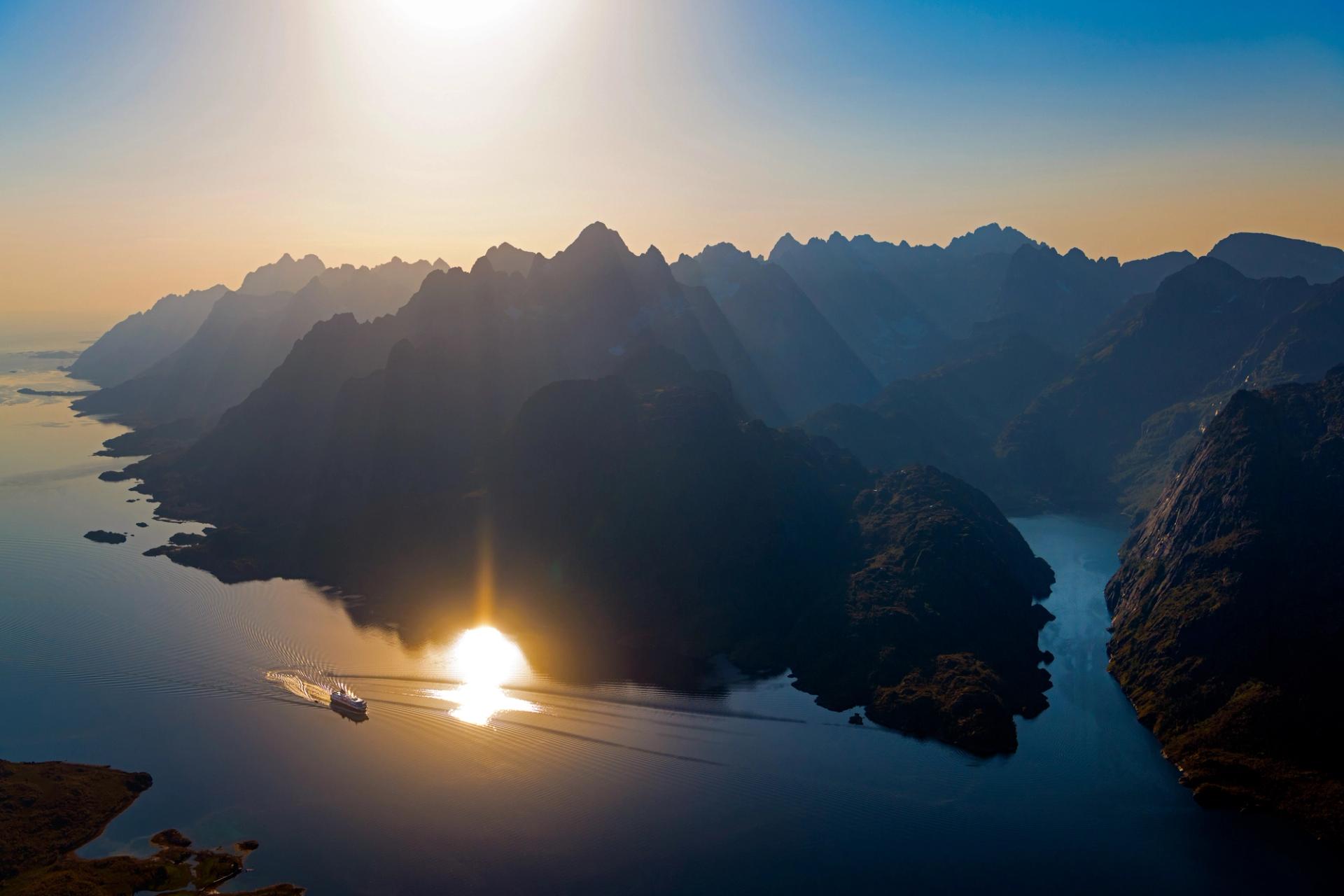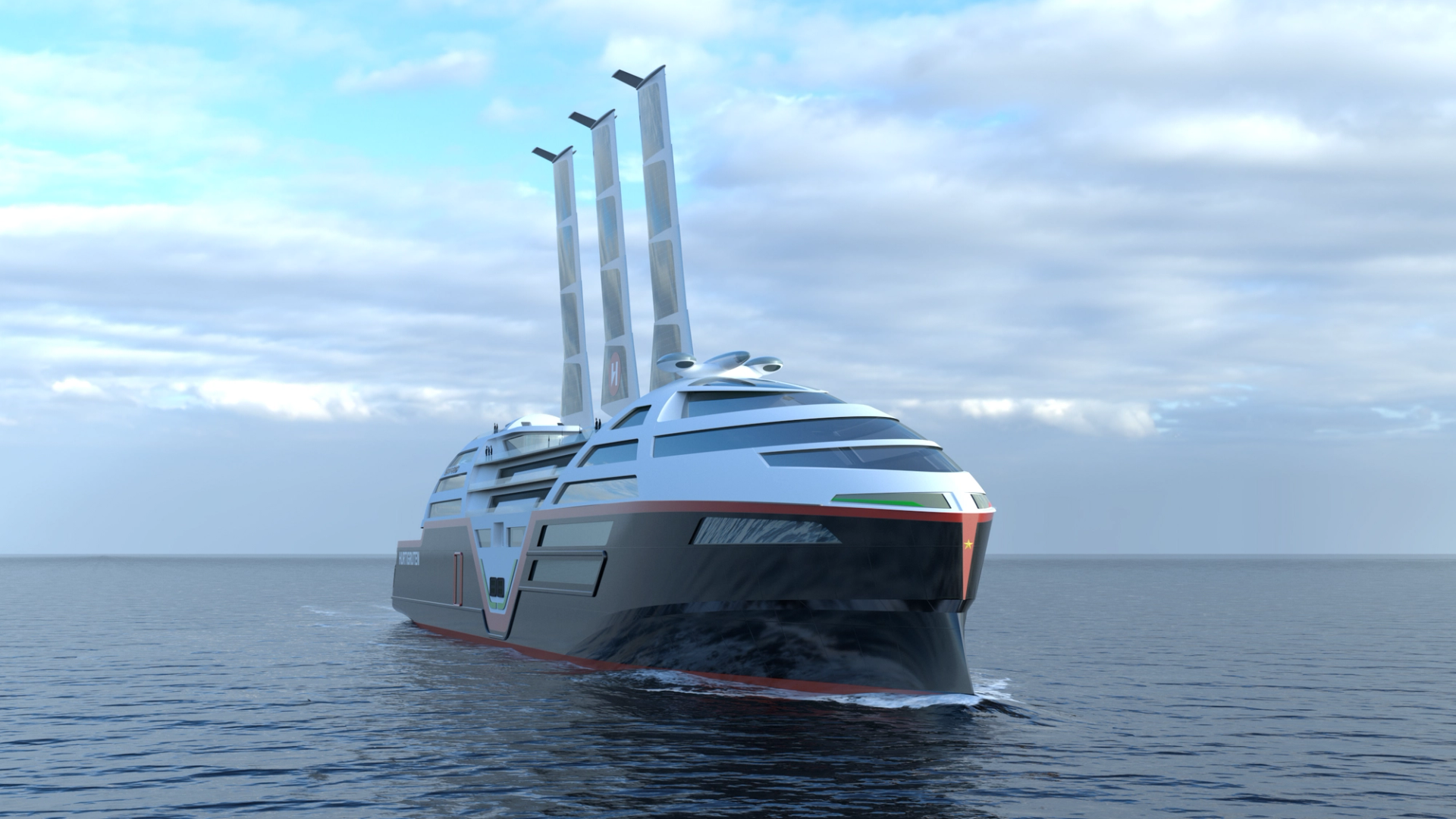
Green cruising: Norway’s World Heritage fjords are becoming emission free
Published 6 Dec 2022 (updated 29 Oct 2025) · 6 min read
Norway has the world’s second longest coastline, and the fjords are the country’s biggest tourist attraction.

Norwegian shipowners are now launching brand-new, zero-emission cruise shipspacked with cutting-edge technology.
In September 2023, the Norwegian Minister of Trade and Industry announced that tourism will be the fifth strategic export initiative in the government’s export reform. The initiative aims to increase export and build a more competitive tourism industry that is both more sustainable and more profitable.
Norwegian shipowners have launched brand-new, zero-emission cruise ships, packed with cutting-edge technology. Enormous battery packs, modern sails and integrated solar panels make it possible to sail the rough seas off the Norwegian coast fuelled by clean energy.
And this is absolutely necessary. By 2026, greenhouse gas-emitting vessels will be prohibited from sailing into Norway’s spectacular World Heritage fjords, including the Geirangerfjord and Nærøyfjord. This opens up major opportunities for sustainable cruising and new solutions.
Norwegian cruise traffic has experienced tremendous growth, contributing heavily to value creation in Norway’s ocean industries as a whole. 2023 is set to be another record year for cruise traffic in Norway, with an estimated 4.9 million passengers.
At the same time, the cruise industry has a major environmental footprint. According to the Western Norway Research Institute, cruise ships in Norway consume about 170 million litres of fuel a year – accounting for nearly 3 per cent of the country’s overall greenhouse gas emissions. Most of the fuel is burned at sea, but around 20 per cent – or nearly 34 million litres – is burned while the ships are in port.
Decarbonising the fjords
There are few places where this is more apparent than in the Geirangerfjord. The fjord receives around 800 000 visitors a year. Two of five visitors are cruise tourists, with tourism generating roughly USD 22 million annually. Growth is expected to continue unabated, despite the fact that the Norwegian Maritime Authority has warned that air quality will be downright hazardous at times in the narrow fjord.
To tackle these environmental challenges, the Norwegian parliament has, as mentioned above, introduced new requirements stipulating that all cruise ships and ferries in World Heritage fjords must be emission free from 2026. The Government is also seeking to halve emissions from domestic shipping and fisheries by 2030.
Meeting these requirements will require tremendous innovation in green maritime technology. Below are some of the novel, eco-friendly solutions being developed by Norwegian companies.

The green ships of the future
Most of the world’s shipping fleet is powered by heavy fuel oil. Although it’s cost-effective, this type of fuel emits relatively large amounts of NOx and SOx. But is it possible to generate enough electricity to power a ship weighing up to several hundred thousand metric tons?
It is – at least for a day. Ulstein has developed a comprehensive power solution allowing large cruise ships to run emission free for a full day. The solution includes powerful batteries, energy recovery, specialised heating and ventilation, solar panels, hot water storage and a modern automation system with cloud service capabilities. All the technology is currently commercially viable and available, and some of the components can also be retrofitted into existing vessels.

Along the Norwegian coast, Hurtigruten Norway, a company with 130-year legacy along the Norwegian coast, is undertaking its most extensive environmental ship upgrades yet.
By 2024, all seven ships in its coastal fleet will have been retrofitted with major green updates, cutting CO2 emissions by 25 per cent and NOx by 80 per cent.
“We have pinpointed the most promising technologies for our groundbreaking future cruise ships.”
Hedda Felin
CEO, Hurtigruten Group
Hurtigruten Norway’s Sea Zero
Hurtigruten Norway also has ambitions to launch its very first zero-emission cruise ship: Sea Zero. The company is partnering with Norwegian research institute SINTEF Ocean, which will be leading the project and involved in technology development.
The early concept designs include features such as a 60-MWh battery pack, retractable wind and solar sails, AI-assisted manoeuvring and smart cabins with real-time energy monitoring.
Hedda Felin, CEO of Hurtigruten Norway, explains why the company is developing Sea Zero:
“We have invested EUR 100 million into green upgrades for our existing coastal route fleet of seven ships, including transforming three ships to use hybrid power. While hybrid power allows ships to switch to electric batteries and be emission free for a few hours, Sea Zero will go further and allow our ships to be fully emission free, not just for a few hours, but always. It will require a lot of hard work, a lot of investment and a lot of collaboration with very clever partners. But I know we’ll get there.”
Several leading Norwegian companies are taking part in the project, including the ship designer and shipbuilder VARD, which has been tasked with drawing up a design concept that will benefit both the environment and passengers.
“We have pinpointed the most promising technologies for our groundbreaking future cruise ships, and are committed to delivering a ship that surpasses all others in terms of energy efficiency and sustainability within just a few years, together with our partners,” says Felin.

Havila Voyages also operates hybrid cruise ships along the Norwegian coastline, but with a different type of green and innovative technology.
Its four coastal cruise ships run on LNG and battery power.
The batteries can also be charged in port using clean hydropower.
Setting sail on emission free cruises
Liquefied natural gas (LNG) is considered an important “bridging fuel” in the transition to zero-emission or low-carbon energy. Thanks to the use of LNG and efficient operations, Havila Voyages’ coastal cruise ships release 35 per cent less CO2, while battery packs enable the vessels to sail emission free for up to four hours.
In its effort to ultimately become emission free, Havila Voyages has developed a platform for commercialising, tracking and documenting the overall impact of its combined low and zero-emission technologies using a multidisciplinary approach and advanced simulation models.
Havila Voyages’ ships have also been designed to ensure that when hydrogen becomes a viable fuel approved for commercial sailing, the vessels can be converted. The vessels feature heavily in the FreeCo2ast project led by HAV Group and funded under Norway’s Pilot-E scheme. The objective of the project is to find solutions that enable large ships to cover longer distances at higher speeds and with zero emissions.
“In the short term, we will gradually blend liquefied biogas with the natural gas we use today. Biogas has the same properties as the natural gas. We aim to be fully operational using only biogas by 2028 – thus becoming carbon neutral,” says Bent Martini, CEO of Havila Voyages.
“After that, we will switch to emission-free fuel alternatives such as hydrogen, and the goal is zero emissions by 2030,” he adds.
Havila Voyages’ sustainability strategy extends beyond fuel.
“We have a unique food concept with no buffets – all meals are served à la carte. This enables us to reduce food waste by at least 60 metric tons a year, compared to similar ships with buffet servings. Our food is locally sourced from producers along the coastline we operate on and reflects Norwegian food culture. And no one leaves our restaurants hungry,” he explains.
“Our belief is that our sustainable approach to coastal tourism and our focus on climate and the environment are a positive contribution to the transition towards a zero-emission society. We look forward to continuing our journey and doing our part to make tourism and shipping more sustainable socially and environmentally,” Martini says.
Brim Explorer sails groundbreaking hybrid-electric catamarans and electric boats.
The four Brim ships offer silent, emission-free fjord tours.
Brim brings tourists close to Arctic nature and wildlife above and below the sea – with minimal impact.
Silent fjord experiences
At the opposite end of the scale, smaller tourist ships can give cruise passengers a different kind of experience.
Brim Explorer’s groundbreaking hybrid-electric catamarans can accommodate up to 140 passengers and offer quiet, emission-free tours in Lofoten and Tromsø in North Norway, as well as in Svalbard in cooperation with Hurtigruten Svalbard. The vessels generally use only their electric engine during the tours and can charge overnight in most ports, giving the passengers silent fjord experiences.
The company also offers cruises on the Oslofjord on all-electric boats.
“Our goal was to prove that it makes financial sense to prioritise sustainability. Over time, it has become increasingly clear that more and more tourists are concerned about their impact on the environment and are choosing the greenest option,” says Agnes Árnadóttir, CEO of Brim Explorer.
